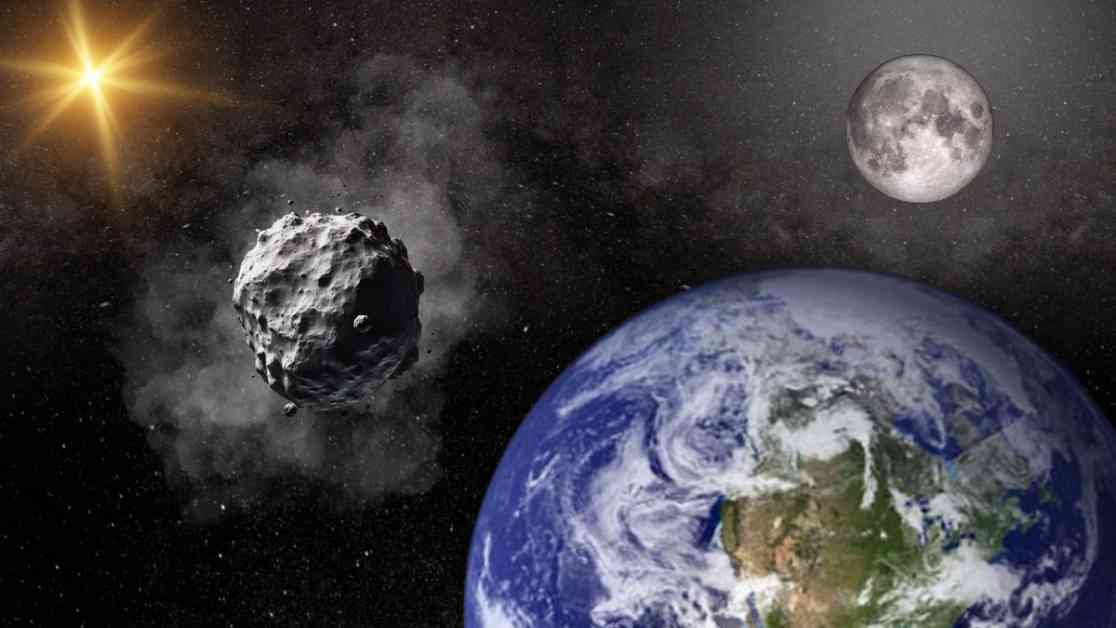NASA scientists have made an exciting discovery that has captured the attention of space enthusiasts worldwide. Earth is set to capture a “second moon” this weekend, as the tiny asteroid 2024 PT5 is expected to temporarily orbit our planet. While this phenomenon may sound like something out of a science fiction movie, it is actually quite common in the world of astronomy.
The asteroid 2024 PT5 typically orbits the sun as part of a small asteroid belt that follows Earth’s path. However, on Sunday, September 29, Earth will temporarily capture this mini-moon, which will stay in its orbit for a brief period before continuing its journey around the sun. This temporary capture is set to begin at 15:54 EDT and end at 11:43 EDT on November 25.
According to mini-moon event expert and Universidad Complutense de Madrid professor Carlos de la Fuente Marcos, the asteroid belongs to the Arjuna asteroid belt, a secondary asteroid belt consisting of space rocks that follow orbits very similar to that of Earth. These objects are part of the near-Earth object population of asteroids and comets, adding to the fascinating diversity of celestial bodies that interact with our planet.
While the idea of Earth having a second moon may seem extraordinary, these gravitational capture events are not as rare as one might think. Objects from the Arjuna asteroid belt can approach Earth at close ranges and low velocities, resulting in temporary orbits around our planet. Asteroid 2024 PT5, however, will not complete a full orbit around Earth, making it more of a “window shopper” in the realm of celestial bodies.
This mini-moon event is not the first time Earth has captured an asteroid, as scientists have documented previous short and long-capture events. Short captures typically last about a week and occur several times per decade, while long-capture events can last years, leading to snared asteroids completing one or more full orbits of Earth. These occurrences highlight the dynamic nature of our solar system and the interactions between different celestial bodies.
Despite the temporary nature of this mini-moon’s orbit around Earth, it offers a unique opportunity for astronomers to study and observe the asteroid up close. Professional astronomers equipped with powerful telescopes will be able to capture images of 2024 PT5 during its brief stay, providing valuable insights into the composition and behavior of this cosmic visitor.
One major difference between the mini-moon and Earth’s primary moon is their size. While the moon measures an estimated 2,159 miles in diameter, asteroid 2024 PT5 is a mere 37 feet wide, making it significantly smaller in comparison. This size difference explains why the mini-moon will not be visible to the naked eye and requires specialized equipment for observation.
As Earth prepares to welcome its temporary companion this weekend, scientists and space enthusiasts alike are eagerly anticipating the unique celestial event. The capture of asteroid 2024 PT5 serves as a reminder of the dynamic and ever-changing nature of our solar system, where interactions between different celestial bodies can lead to unexpected and fascinating phenomena.
In conclusion, the upcoming mini-moon event offers a rare opportunity to observe a cosmic visitor up close and gain valuable insights into the diverse array of objects that interact with Earth in our solar system. As scientists continue to study and monitor these celestial phenomena, we can look forward to further discoveries and revelations about the mysteries of our universe.












